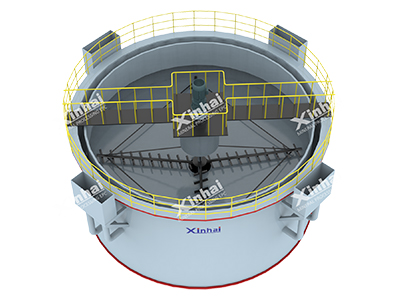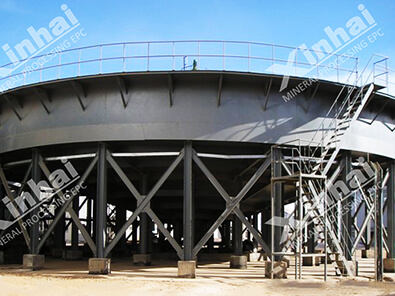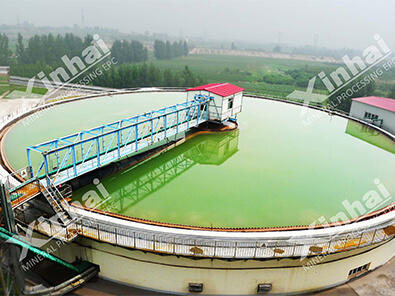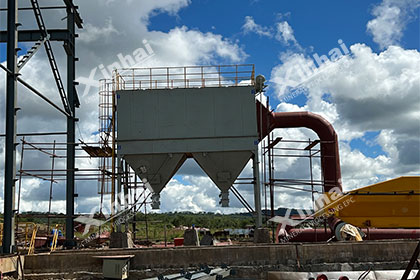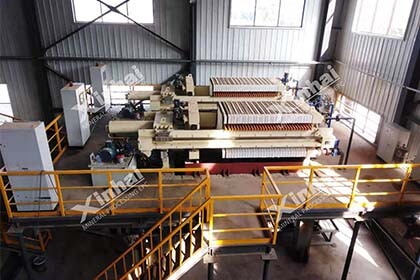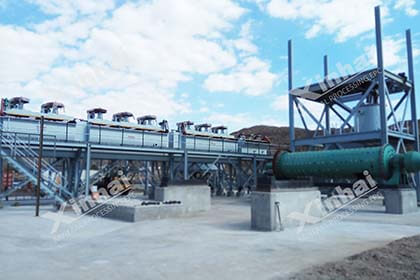The Ultimate Guide of Concentrate Dewatering Process
 Chileen Gao
Chileen Gao
 Dec 27, 2022
Dec 27, 2022
 6314
6314
If you want to know more details about equipment, solutions, etc, please click the button below for free consultation, or leave your requirements!
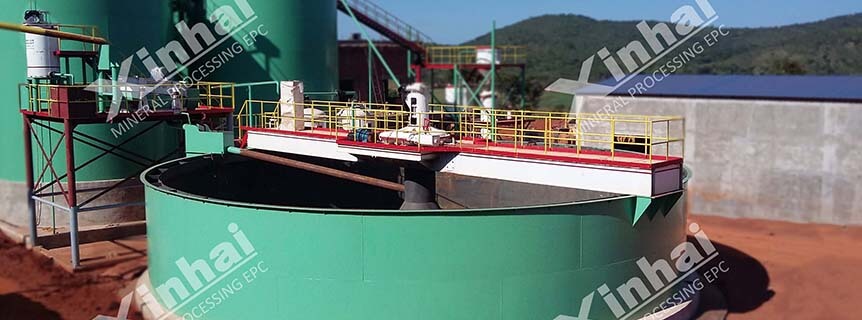
Nowadays, most of the mineral processing equipment is used for wet beneficiation, and the concentrate produced by these equipment contains a large amount of water. And the proportion of moisture is large, even several times the weight of the concentrate itself.
However, the moisture content of the concentrate is one of the important criteria for measuring the quality of the concentrate and it is also necessary to reduce the moisture content of the concentrate to a certain standard in order to facilitate shipment, reduce shipping costs and meet the needs of subsequent processing.
Therefore, the dewatering process of concentrates is very important in the whole process of mineral processing. This article mainly introduces the dewatering of concentrates, which mainly includes four methods of dewatering, precipitation concentration, filtration and drying, as well as the corresponding equipment for your understanding.
01Dehydration
Back
The Nature of Water in Concentrates
There are four main types of moisture contained in general concentrates, classified as gravity moisture, capillary moisture, film moisture and hygroscopic moisture.
Gravity Moisture
Gravitational water refers to the part of the gap between solid particles that can flow freely under gravity. It is the most easily removed water in the material.
Capillary Moisture
There will be relatively small voids between the solid particles of the concentrate, and capillary action can be generated between these voids. The water in these small voids is capillary water.
Film Moisture
Film moisture refers to the formation of a layer of hydrated film on the surface of solid particles due to the dipole effect of water molecules, which is called film moisture. Relative to other water, this part of the water is more difficult to remove.
Hygroscopic Adsorption
Adsorption exists on the surface of the concentrate solid particles, which will adsorb water molecules on his surface and reach the interior of the solid particles through osmosis. The water attached to the surface of the solid particles is called adsorbed water; the water that penetrates into the interior of the solid particles is called absorbed water; these two together are called hygroscopic water. This part of the water is also difficult to remove.
Dewatering Methods
There are a number of dewatering methods that can be used according to different process requirements, which can be broadly classified as follows.
Gravity Dewatering
Gravity dewatering refers to dewatering by gravity. It can be further divided into the following two forms.
Natural gravity dewatering: i.e. dewatering by using the natural gravity of water on the surface of solid particles.
Gravity concentration dewatering: i.e. dewatering by means of the gravitational effect of solid particles settling in the liquid to achieve solid-liquid separation. The dewatering principle of the thickener is this method.
Mechanical Dewatering
Mechanical dewatering refers to the separation of solid particles and water by mechanical force. It can be further divided into the following three forms.
Centrifugal dewatering refers to. the use of centrifugal force to achieve solid-liquid separation, such as centrifugal dewatering machines.
Sieving dewatering refers to dewatering by relying on the inertial force generated when the material makes relative movement with the screen surface of a vibrating screen, such as a linear vibrating screen.
Filtration dewatering refers to the method of retaining solids by passing the solids and liquid mixture through a fine plant fibre fabric or wire mesh, and accelerating the solid-liquid separation by vacuum or pressure, which is used in vacuum filters.
Thermal Dewatering
Thermal dehydration refers to dehydration achieved by using thermal energy to vaporise and evaporate the water in the material, such as thermal drying and sunlight exposure.
Magnetic Dewatering
Magnetic dewatering refers to the use of strong magnetic fields to generate magnetic forces on magnetic minerals to achieve solid-liquid separation.
PhysiCo-chemical Dewatering
Physico-chemical dehydration is the use of water-absorbent objects to absorb water, thereby dehydrating the material, for example, quicklime can absorb water.
Electrochemical Dewatering
Electrochemical dehydration means that under the action of an applied electric field, water molecules with a positive charge will move towards the cathode and solid particles with a negative charge will move towards the anode, thus achieving solid-liquid separation.
Depending on the characteristics of the material's moisture, a dewatering method appropriate to its nature should be used.
The Role of Dewatering
The dewatering of concentrates in mineral processing plants is mainly for the following purposes.
(1) to reduce the moisture content of the concentrate and to improve the quality of the concentrate. Because the moisture content of the concentrate is one of the important criteria for measuring the quality of the concentrate, if the moisture content is too high, the concentrate will not be of much value.
(2) Conserve water. A large amount of water will be used in the ore sorting process, which can be recovered in the process of dewatering the concentrate to avoid waste.
(3) Easy shipment and reduced shipment costs. The higher the moisture content of the product, the higher the cost of transportation, and dewatering the product also reduces transportation costs.
02Precipitation and Concentration
BackWhat Is Precipitation Concentration?
The solid particles in the slurry, under the influence of gravity, accumulate at the bottom of the vessel and the clear water is squeezed over the vessel. In this way, the slurry is divided into two parts, the clarified liquid and the concentrated slurry, a process known as precipitation concentration.
Several common types of concentration equipment
High Efficiency Thickener
The high efficiency thickener is mainly composed of a circular thickening pool and a mud scraper. The solid particles suspended in the upper part of the thickening pool settle under the action of gravity, while the upper part is clarified water, so that the solid-liquid separation. The mud deposited at the bottom is collected by the rake type mud scraper and discharged to the bottom centre of the pool, while the clarified water is overflowed from the upper edge.
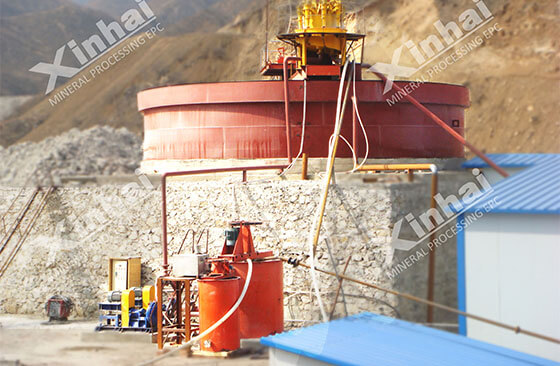
(high efficiency thickener for concentrate dewatering)
High-Efficiency Retrofit Thickener
The High Efficiency Retrofit Concentrator adds a degassing tank to the High Efficiency Concentrator to eliminate solid particles adhering to air bubbles and facilitate solid particle settling.

(high efficiency retrofit thickener for dewatering process)
High-Efficiency Deep Cone Thickener
The high efficiency deep cone thickener is a new product for the solid-liquid separation process at present. It has the advantages of low investment, small footprint and high efficiency. In addition, it can be operated intelligently.
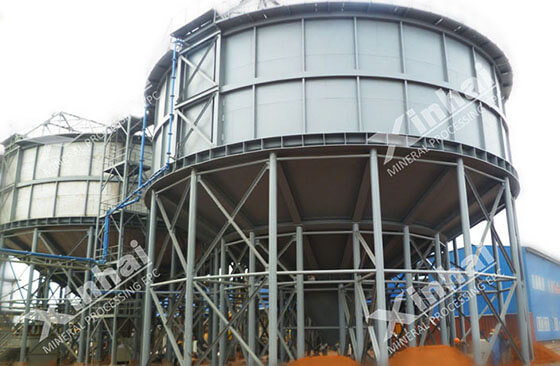
(high efficiency deep cone thickener for dewatering process)
Peripheral Roller-Driven Thickener
This is a more traditional equipment with a simple structure and a large processing capacity, suitable for processing products with low concentration.
Hydraulic Centre Drive High Efficiency Thickener
This equipment is driven by hydraulic pressure and has overload protection. And the processing capacity is larger and the efficiency of concentration is higher. It is mainly applied to the clarification and thickening of mine coal slurry water and ore slurry.
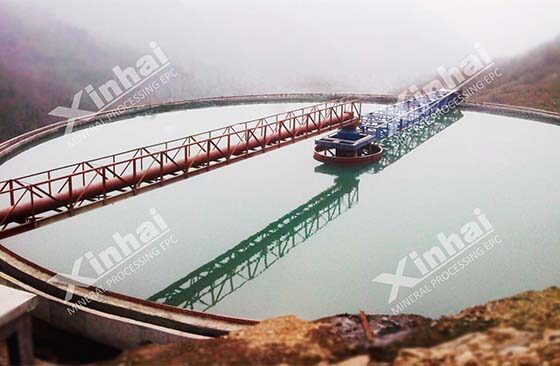
(hydraulic centre drive high efficiency thickener for dewatering process)
03Filtering
BackWhat Is Filtering?
Filtration is the process of separating solids and liquids by passing the slurry through a filter medium (e.g. filter cloth).
The Principle of Filtration
The principle of filtration is that the water is removed from the material by means of a certain external force, such as a filtering medium. For example, filter cloth is now commonly used as a filtering medium in mineral processing plants. The filter cloth has small holes, called filter holes. When filtering, the solid particles can form an arch-like structure above the filter holes, so that the solid particles cannot pass through the filter holes, while the water can flow through smoothly. In this way, the solids are separated from the liquid.
Several Common Types of Filtration Equipment
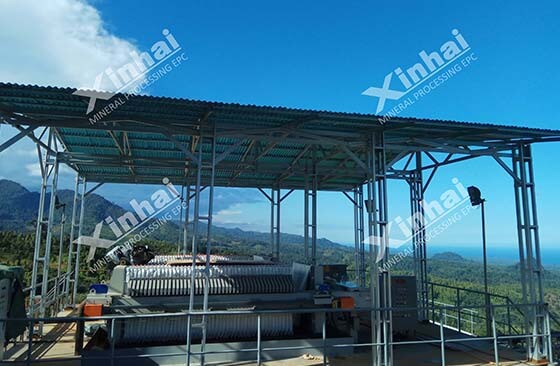
(filter for dewatering process)
Ceramic Vacuum Filter
The ceramic vacuum filter can handle a wide range of materials with finenesses from -200 mesh to -450 mesh. It has an advanced discharge system and can be used under any working conditions.
Program-Controlled Automatic Hydraulic Chamber Filter Press
This is an intermittent solid-liquid separation equipment with integrated design, reasonable structure, simple and convenient operation.
Disc Vacuum Filter
This equipment is used with the help of the pressure difference formed by the vacuum pump to make the solid particles adsorbed on the filter cloth of the disc, so that the filtrate can be filtered through the filter cloth to achieve solid-liquid separation. It has a better performance and a longer service life.
04Drying
BackWhat is Drying?
Drying is an operation that uses thermal energy to evaporate water from solid materials, thereby dewatering them. It is a relatively thorough method of dewatering.
Common Drying Equipment
Rotary Kiln
In a rotary kiln, fuel is constantly entering and burning in the air to release heat and produce flue gas. In this way, the material and the flue gas exchange heat in the rotary kiln, turning the raw material into clinker.
Rotary Dryer
The material in the rotary dryer is continuously folded back and lifted under the action of the spiral blades, in the process the material is dried.
05Summary
BackAt present, two-stage and three-stage dewatering processes are commonly used in mineral processing plants, while one-stage dewatering processes are less commonly used. Generally speaking, if the requirements for the moisture content of the concentrate are not strict, the two-stage dewatering process of concentration and filtration can be used; if the requirements for the moisture content of the concentrate product are more strict, the three-stage dewatering process of concentration, filtration and drying can be used. The above describes the four processes on concentrate dewatering. welcome to click the chat button to learn more about dewatering processes.
 +86 182 3440 3483
+86 182 3440 3483 yanzhang19990421@gmail.com
yanzhang19990421@gmail.com




 Message
Message Chat Now
Chat Now


